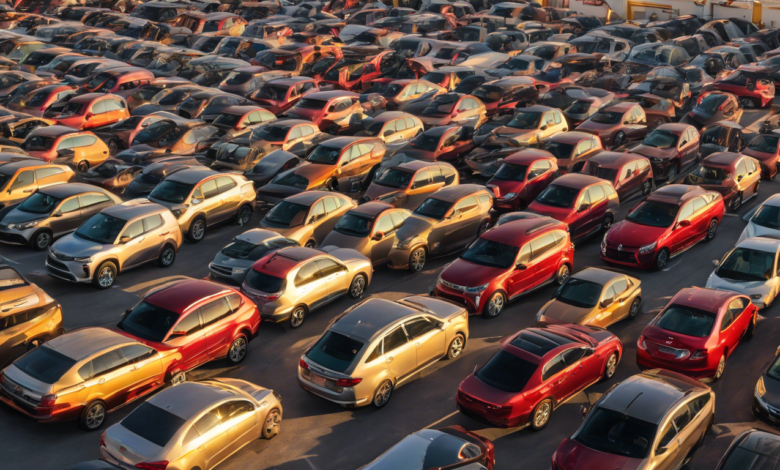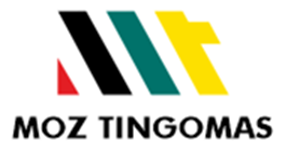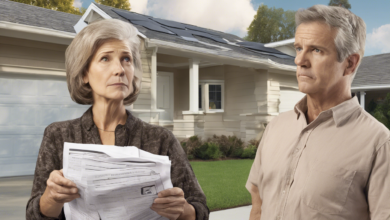Car Prices Decline: Used Car Market Plunges 20% from Pandemic Highs

The used car market is experiencing a significant shift, with car prices dropping sharply from their pandemic-era highs. This dramatic change has caught the attention of both consumers and industry experts, as it marks a notable reversal from the recent trend of soaring vehicle costs. The 20% decline in used car prices signals a potential turning point in the automotive market, affecting buyers, sellers, and the broader economy.
This article delves into the factors behind this price plunge and its implications for various stakeholders. It examines the current market overview, compares new and used car price trends, and explores the economic influences driving this decline. Additionally, it offers insights into the future outlook for car buyers and provides valuable information from trusted sources like Kelley Blue Book. By understanding these dynamics, readers can make more informed decisions when navigating the evolving landscape of car purchases.
Market Overview: 20% Drop in Used Car Prices
The used car market has experienced a significant shift, with prices plummeting from their pandemic-era highs. As of April, the average price of a used car stood at $28,550, marking a 10% decrease compared to the previous year. This decline has accelerated, with prices dropping 19.4% from their peak in February 2022.
Factors driving the decline
Several factors have contributed to this downward trend. The normalization of inventory levels in the new car market has had a direct impact on used car prices. As new vehicle lots have seen a buildup of inventory over the past year, discounts and incentives on aging stock have become more common. This has led to a corresponding decline in the values of newer used vehicles.
Comparison to pandemic peak
The current market situation stands in stark contrast to the unprecedented price surges witnessed during the pandemic. In 2021 and early 2022, used car prices skyrocketed, with annual increases exceeding 40% in some months. However, the market has since undergone a dramatic reversal. Wholesale used vehicle prices declined by 3% in April compared to March, following an 8. 6% increase through the first quarter of 2023.
Impact on consumers
While the price drop offers potential relief for buyers, challenges remain. High interest rates continue to pose difficulties for those financing their purchases. The average interest rate on a used car loan is close to 12 %, which can significantly increase the overall cost of buying a vehicle. Despite the recent declines, used car prices are still 16.9% higher than they were in July 2019, indicating that the market has not fully returned to pre-pandemic levels.
Looking ahead, experts suggest that used car prices may continue to fall closer to pre-pandemic levels as new car inventories increase. However, the extent and speed of these price changes will likely vary by region and vehicle type.
New vs. Used: Analyzing Price Trends
The automotive market has experienced significant shifts in recent years, affecting both new and used car prices. These changes have had a profound impact on consumer buying patterns and dealership strategies.
New car price changes
New vehicle prices have remained relatively stable in recent months. In June, the average new car buyer paid $48,644, which was only $266 more than in May and $307 lower than in June 2023 . Discounts accounted for 6.4% of the average sale, indicating a slight easing in pricing pressure. However, supply and demand dynamics continue to influence pricing across different brands. Toyota, Lexus, and Honda, for instance, remain undersupplied and sell most vehicles close to MSRP, while Stellantis brands have been discounting aggressively due to higher inventory levels .
Used car market dynamics
The used car market has seen more pronounced price fluctuations. In June, the average used car was listed for $25,251, marking a decrease of about $400 from May and more than $1,700 from the previous year. This downward trend in used car prices is expected to continue, potentially bringing prices closer to pre-pandemic levels . However, the long-term supply of used cars may remain constrained due to the production shortfall of approximately 8 million vehicles during 2021 and 2022 .
Consumer buying patterns
The economic landscape has significantly influenced consumer behavior in the automotive market. With new car prices up 48% from a decade ago, cost-efficiency has become a primary concern for buyers . The used car market, while showing signs of price moderation, still faces challenges, particularly for budget-conscious shoppers seeking vehicles under $15,000 . Interestingly, the average age of vehicles on American roads has reached 12.6 years, indicating a trend towards longer vehicle ownership. This shift in consumer behavior, coupled with evolving market dynamics, continues to shape the automotive landscape in 2024.
Economic Factors Influencing the Decline
The decline in car prices is influenced by several economic factors, each playing a significant role in shaping the current market landscape.
Interest rates and financing
Rising interest rates have had a substantial impact on the automotive market. The Federal Reserve’s efforts to combat inflation have led to increased borrowing costs, affecting car buyers’ purchasing power. With rates not expected to decrease this year, consumers face higher expenses when financing vehicle purchases . This trend disproportionately affects those with poor credit history, who may encounter rates over 14% for new cars and 21% for used vehicles .
Supply chain improvements
The automotive industry has been grappling with supply chain challenges since the pandemic. However, recent improvements have begun to alleviate some of these issues. Manufacturers are adapting to the unpredictable market by diversifying their supplier base and operational sites . Additionally, the adoption of third-party logistics has emerged as a cost-effective solution, allowing automakers to reallocate resources to more pressing demands .
Consumer spending habits
Consumer behavior has undergone significant changes, influencing the car market. The pandemic has accelerated the shift towards digital engagement, with buyers growing accustomed to researching, customizing, and purchasing vehicles online . This trend has been further amplified by the rise of EV manufacturers like Tesla and Rivian, which offer seamless online-to-home buying experiences . As a result, traditional dealerships are adapting to these evolving customer expectations by transitioning to omni-channel strategies that integrate online and offline experiences.
These economic factors collectively contribute to the ongoing decline in car prices, shaping a new landscape for both consumers and industry players.
Future Outlook for Car Buyers
The used car market is showing signs of a significant shift, with prices continuing to fall as we move into summer 2024. According to recent data, the average used car listing price currently stands at $25,571 . This represents a notable decrease from the peak prices seen in 2022, which exceeded $30,000.
Predictions for upcoming months
Experts anticipate further price drops in the coming months, potentially creating a buyer’s market for savvy shoppers . Wholesale used car prices have already fallen 2.1% in the past month alone , suggesting that retail prices may follow suit. This trend is expected to continue, driven by factors such as compelling new car incentives and high interest rates slowing used car sales.
Best time to buy in 2024
While the market is becoming more favorable for buyers, it’s crucial to exercise patience and flexibility. The second half of 2024 could potentially offer better conditions for car shoppers, especially if interest rates decrease. However, vehicle affordability remains a challenge for many, with the average new car loan interest rate at approximately 9.7% .
Long-term market expectations
Looking ahead, the used car market is likely to stabilize, but prices are expected to remain above pre-2021 levels for some time. In 2019, the average used car selling price was $20,618, compared to the current $25,328. Hybrid and electric vehicle prices, while still elevated, are showing signs of narrowing the gap with the overall market.
Conclusion
The used car market has seen a major shake-up, with prices taking a nosedive from their pandemic highs. This price drop has a big impact on buyers, sellers, and the economy as a whole. The mix of better supply chains, changing consumer habits, and tricky economic factors has led to this new landscape in the car market. As we look ahead, it seems like prices might keep falling, possibly getting closer to what they were before the pandemic.
For those thinking about buying a car, it’s a good idea to keep an eye on the market. While lower prices are definitely a plus, high interest rates are still making it tough for some buyers. The second half of 2024 could be a better time to buy, especially if interest rates start to come down. In the long run, though, it looks like car prices will stay above where they were before 2021, at least for a while. This new normal in the car market means both challenges and opportunities for everyone involved.
FAQs
Q: By what percentage have used car prices increased since the pandemic began?
A: From the period before the pandemic to now, used car prices have seen a significant increase of 35%. Before the pandemic, the average price was $19,827, which has risen to $26,686.
Q: Are there any indications that car prices are beginning to decrease?
A: Yes, recent data from Cox Automotive indicates that new car transaction prices are declining. This trend is putting downward pressure on used car prices, suggesting potential further decreases in the summer of 2024.
Q: How might used car prices be affected if a recession occurs?
A: Observations of weekly trends show that used car prices have been declining for several months in both retail sales and wholesale markets, which influence trade-in values. If a recession happens in 2024 or 2025, it is likely that used car prices will continue to fall.
Q: What is the forecast for used car prices in the UK for 2024?
A: Experts predict that used car prices in the UK will stabilize in 2024. Although prices have been dropping, this trend is seen as a return to normal levels rather than a significant market crash. Therefore, 2024 could be an opportune time to look for good deals on used cars.





Informative article, just what I was looking for.
Multimedia Engineering
Informatics Engineering
Internet Engineering
Language Center
International Studies
Electronics Engineering
telecoms
electrical engineering
computer engineering
Thanks , I’ve recently been searching for information about this subject
for a long time and yours is the greatest I have came upon so
far. However, what about the bottom line? Are you positive concerning the supply?
Look at my webpage – Buy Airmoto
На проходимость ставки влияют различные факторы, в том числе характеристики обеих команд, насколько сильно преимущество одной над
другой..
Also visit my webpage; 1 win